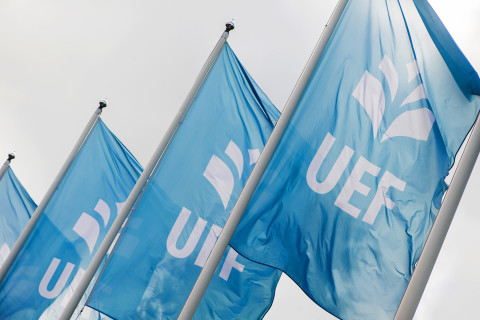ABSTRACT
The majority of the deterioration mechanisms affecting cement-based structures require the presence of moisture. Therefore, ingress of water into concrete is a major factor affecting the rate of deterioration mechanisms; water further enables the transport of aggressive agents that contribute to many physical and chemical degradation processes. As a result, the durability of cement-based materials is mostly dictated by the materials' ability to impede transport of water. Therefore, information on the internal moisture distribution and mass transport properties of the materials would be of high importance in durability assessments and service life predictions. Techniques to visualize moisture movement and distributions in cement-based materials have a significant role in understanding mechanisms involved in water transport and more accurate estimation of the rate of water transport.
In this thesis, the focus is on unsaturated water movement monitoring using tomographic imaging modalities which are the most accurate techniques for that purpose. Previously used monitoring techniques include methods that are based on attenuation or scattering of ionizing electromagnetic radiation and flux of particles (e.g. neutron, X-ray, gamma-ray imaging) and utilizing magnetic properties (nuclear magnetic resonance (NMR) or magnetic resonance imaging (MRI)). These modalities provide high resolution information about the moisture distribution, but also have high costs for operational use and/or are limited to small-sized specimens. Electrical imaging can offer a lower cost monitoring option than the standard high-resolution methods. The resolution in electrical imaging is lower, but the specimen size is not restricted. One electrical tomographic modality, electrical resistance tomography (ERT), has been applied for monitoring moisture in cement-based materials, but it can not be properly applied for surface-dry (electrically resistive) targets (i.e., materials with a low degree of saturation), because the method is based on electric current measurements. Especially, in the case of unsaturated specimens which often feature high electrical resistivity at the surface, adoption of ERT imaging is difficult due to the poor electric contact between electrodes and highly resistive surface of the target.
This thesis aims to overcome the contact problem of electrical imaging for surface-dry (electrically resistive) specimens by using another electrical imaging technique, electrical capacitance tomography (ECT). ECT enables measurements of very low moisture content materials since it uses capacitive measurements that do not necessary require any contact with the target. In ECT, electrical capacitances are measured between electrodes placed around the target, and the boundary data is used to reconstruct the internal permittivity distribution of the target. The reconstructed permittivity distribution, in turn, is directly related to moisture distribution since permittivities of cement-based materials vary as functions of the water content. The challenge in ECT, is that the estimation of spatially-varying permittivity from capacitive boundary measurements is an ill-posed, non-linear inverse problem. This implies that the image reconstruction problem is non-unique in classical sense and highly sensitive to modeling or measurement errors. As a consequence, extra care must be directed to the mathematical modeling of the measurement process as well as to the reconstruction methods.
Previously, the use of capacitive measurements for tomographic imaging of cement -based materials has not been reported. In this thesis, the aim is to study the applicability of ECT for imaging unsaturated moisture flows within cement-based materials. Furthermore, the use of ECT reconstructions for characterizing materials with different moisture transport properties is investigated. To meet those aims, experimental setups for ECT imaging of moisture flows within cement-based materials are engineered and computational methods for the image reconstructions are developed. The results show that the ECT permittivity images provide information on the moisture movement and illustrate the spatially distributed moisture within cement-based materials. ECT images of the moisture flow can be utilized to qualitatively distinguish between different materials, and moreover, they show potential to be used for quantitative characterization of material's moisture transport properties. The studies indicate that ECT can be used as a complementary imaging tool that utilizes contact-free measurements to observe water absorption and moisture conditions in cement-based materials. ECT provides information that could be further used in predicting deterioration and durability of widely used cement-based materials.
The doctoral dissertation of MSc Antti Voss, entitled Imaging moisture flows in cement-based materials using electrical capacitance tomography will be examined at the Faculty of Science and Forestry. The opponent in the public examination will be Professor Burkan Isgor, Oregon State University, USA, and the custos will be Associate Professor Aku Seppänen, University of Eastern Finland.
Photo available for download at https://mediabank.uef.fi/A/UEF+Media+Bank/35806?encoding=UTF-8
